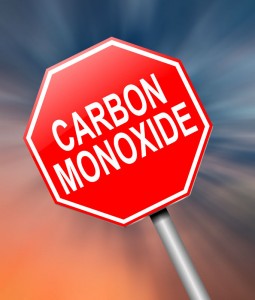Fireplaces are a beautiful addition to any home. In addition to increasing a home’s value, they also provide comfort, warmth, and ambiance during the chilly months of fall and winter. However, fireplaces and other heating appliances can pose a risk to you and your family if they are broken or not properly maintained.
The main concern with a malfunctioning fireplace or heating appliance is carbon monoxide poisoning. Carbon monoxide poisoning kills an average of nearly 400 people each year in the United States, and is responsible for sending countless others to the hospital. Because it can be deadly, homeowners should know the symptoms of carbon monoxide poisoning as well as ways to protect their families.
What is carbon monoxide?
Carbon monoxide is sometimes referred to as the “silent killer” because it is a colorless, odorless, and tasteless gas. Because of this, it is virtually undetectable without specialized equipment or detectors.
What causes carbon monoxide?
Carbon monoxide is created in nearly all combustion reactions. That means that any appliance that burns coal, gasoline, kerosene, propane, or wood can produce carbon monoxide. This includes fireplaces, furnaces, grills, space heaters, stoves, vehicles, and water heaters.
When properly vented, maintained, and free from damage, these appliances pose little risk to homeowners. It is only when damaged or in disrepair that they become a danger for leaking deadly carbon monoxide gas into your home.
Symptoms of carbon monoxide poisoning
The symptoms of carbon monoxide exposure closely mimic those of the flu. At low levels of exposure, those experiencing carbon monoxide poisoning may feel sleepy, nauseous, or have a headache. As exposure continues, symptoms will worsen and begin to include impaired coordination and vison, dizziness, and shortness of breath. With long-term exposure or in high concentrations, carbon monoxide poisoning can lead to coma and death.
How to prevent carbon monoxide poisoning
Protecting you and your family against exposure to carbon monoxide is relatively simple and includes a number of common sense solutions. First, all homes – even those without fireplaces – should have carbon monoxide detectors installed on every floor. They should be placed near heating appliances, furnaces, and water heaters as well as outside bedrooms and sleeping areas. Carbon monoxide detectors should be tested regularly, have their batteries replaced as needed, and should be replaced with newer models every 5-7 years as needed.
In addition to installing carbon monoxide detectors, homeowners should also regularly service and maintain any fuel burning appliances including furnaces, water heaters, fireplaces, and stoves. Likewise, venting and ductwork should also be annually cleaned and inspected to ensure it remains free from damage or blockages.
Homeowners can also greatly reduce their risk of exposure to carbon monoxide by keeping fuel burning appliances out of confined spaces and away from the house whenever possible. This includes not grilling near any open windows, not running generators in garages or sheds, and not leaving any cars idling in a garage, even if the garage door is open.
With regular care and upkeep of their fuel burning appliances and some simple common sense tips, homeowners can rest assured that they have a low risk of exposure to carbon monoxide. To schedule a chimney or air duct inspection or cleaning, contact the experts at Mason’s Chimney Service today!

